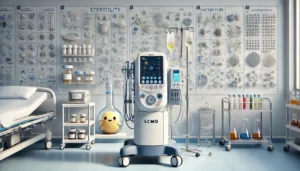Postoperative delirium (POD) after cardiac surgery is a well-known phenomenon which carries a higher risk of morbidity and mortality. Multiple patient-specific risk factors and pathophysiologic mechanisms have been identified and therapies have been proposed to mitigate risk of delirium development postoperatively. Notably, cardiac surgery frequently involves the use of an intraoperative cardiopulmonary bypass (CPB), which may contribute to the mechanisms responsible for POD. Despite our greater understanding of these causative factors, a substantial reduction in the incidence of POD remains high among cardiac surgical patients. Multiple therapeutic interventions have been implemented intraoperatively and postoperatively, many with conflicting results. This review article will highlight the incidence and impact of POD in cardiac surgical patients. It will describe some of the primary risk factors associated with POD, as well as anesthetic management and therapies postoperatively that may help to reduce delirium.
Keywords: cardiac surgery; cardiopulmonary bypass; postoperative delirium.
Summary from IPA:
Perfusionists play a crucial role in cardiac surgery, especially during cardiopulmonary bypass (CPB), and their practices can significantly impact the risk of postoperative delirium (POD) and brain injury. Here is a detailed summary of how perfusionists might improve their practice to reduce these risks:
- Optimizing Perfusion Parameters: Careful management of perfusion pressure and flow rates is crucial. Maintaining optimal cerebral perfusion pressure helps ensure adequate brain oxygenation. Adjusting flow rates to patient-specific needs can minimize the risk of hypoperfusion or hyperperfusion, both of which can contribute to brain injury.
- Temperature Management: Hypothermia is commonly used during CPB to protect the brain, but it must be carefully managed. Rapid cooling and rewarming can be harmful. Gradual changes in temperature and maintaining mild hypothermia might be beneficial in reducing neurological complications.
- Oxygen Delivery and Carbon Dioxide Management: Ensuring adequate oxygen delivery and maintaining normocarbia are essential. Hyperoxia and hypocarbia should be avoided as they can lead to cerebral vasoconstriction and reduced blood flow.
- Use of Filters and Avoiding Air Embolism: Using arterial line filters to remove air and particulate matter can reduce the risk of embolic events. Vigilant de-airing procedures and careful monitoring for air bubbles in the circuit are crucial.
- Minimizing Hemodilution: Excessive hemodilution can lead to reduced oxygen-carrying capacity and cerebral hypoxia. Maintaining a higher hematocrit level may be protective against neurological injury.
- Reducing Inflammatory Response: CPB can induce a systemic inflammatory response. Using biocompatible circuit materials, leukocyte filters, and minimizing the duration of CPB can help reduce this response.
- Monitoring Neurological Function: Using cerebral oximetry or other neuromonitoring techniques to continuously monitor brain oxygenation and function can provide real-time feedback and allow for immediate intervention if issues are detected.
- Postoperative Management: Collaborating with the surgical and anesthesiology teams for optimal postoperative care, including careful management of blood pressure, oxygenation, and fluid balance, is crucial in preventing POD.
- Continual Education and Training: Staying updated with the latest research and advancements in perfusion technology and techniques is essential. This includes training in advanced CPB strategies and participating in quality improvement programs.
- Collaborative Practice: Working closely with the cardiac surgical team, anesthesiologists, and nursing staff to develop protocols for patient-specific approaches to CPB can lead to better outcomes.
By focusing on these areas, perfusionists can significantly contribute to reducing the risk of delirium and brain injury during CPB, enhancing patient safety and outcomes in cardiac surgery. This commentary from the IPA team is in no way related to this publication by Brain Sciences.







